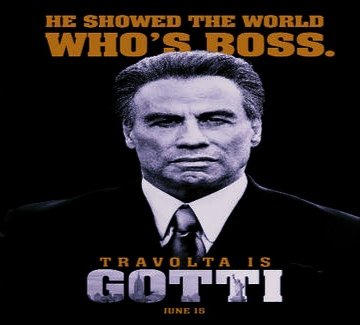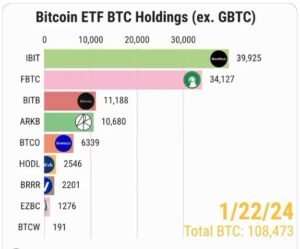John Gotti Family and Their Early Life in the Mob World
The Gotti family is a notorious name in the annals of systematized crime, particularly in the United States. Led by the ignominious John Gotti, this family came one of the most important and influential mafia clans. This preface provides an overview of the Gotti family’s origins and their early involvement in the world of systematized crime.
The Roots of the Gotti Family: The Gotti family, frequently associated with the Gambino crime family, had its roots in Italy. John Gotti’s parents, John Joseph GottiSr. and Philomena, immigrated to the United States from Italy in the early 20th century. They settled in the South Bronx, a neighborhood with a significant Italian- American population.
Growing Up in a Mob- Overran Neighborhood: John Gotti, born in 1940, grew up in the Bronx, surrounded by the influences of systematized crime. The neighborhood was a seedbed of cabal exertion, and youthful John was exposed to this world from a veritably early age. His father, JohnSr., worked as a day drudge and sometimes dabbled in illegal conditioning, exposing his son to the felonious demiworld.
The Shaping of John Gotti’s Felonious Career: As a teenager, John Gotti came involved in small- time felonious conditioning, similar as road fights and theft. These early gests laid the root for his future in the mob world. He started associating with original gangsters, learning the ropes of systematized crime, and establishing connections that would latterly prove pivotal.
The Gotti family’s early life in the mob world was marked by their Italian heritage, their parenting in a cabal- overran neighborhood.


John Gotti’s Life Facts
Born: October 27, 1940, The Bronx, New York, NY
Died: June 10, 2002, United States Medical Center for Federal Prisoners, Springfield, MO
Spouse: Victoria DiGiorgio (m. 1962–2002)
Children: John A. Gotti, Victoria Gotti, Frank Gotti, Angel Gotti, Peter Gotti, Jr.
Grandchildren: Frank Gotti Agnello, Carmine Gotti Agnello, John Gotti Agnello, Charles Herbert Gotti, and more.
Parents: John Joseph Gotti, Sr., Philomena Gotti.
The rise of John Gotti as theb “Teflon Don” and his leadership of the Gambino crime family.
John Gotti, also known as the “Teflon Don,” was a notorious figure in the American Mafia and the leader of the Gambino crime family. His rise to power and the surname” Teflon Don” can be explained as follows
Rise to Power: John Gotti began his felonious career in the 1960s and gradationally worked his way over through the species of the Gambino family. He was known for his intelligence, seductiveness, and ruthlessness, which helped him gain the respect and fidelity of other gangsters.
Teflon Don Nickname: Gotti earned the surname” Teflon Don” because it sounded that felonious charges brought against him infrequently stuck. He’d a remarkable capability to avoid persuasions, indeed when faced with multitudinous legal cases. This was incompletely due to his skillful manipulation of the legal system and the intimidation of substantiations, which made him appear impregnable to execution.
Leadership of the Gambino Crime Family: In 1985, Gotti orchestrated the murder of Paul Castellano, the master of the Gambino family at the time, and assumed control of the family. Under his leadership, the Gambino crime family came one of the most important and influential Mafia associations in the United States.


Felonious Conditioning: Gotti’s term as the master of the Gambino family was marked by a range of felonious conditioning, including highway robbery, loan sharking, medicine trafficking, and involvement in the construction assiduity. He and his family served immensely from their felonious enterprises.
Downfall: Despite his “Teflon” character, Gotti’s luck ultimately ran out. In 1992, he was condemned of murder, wrongdoing, and other charges largely due to the evidence of recreant gangsters and other substantiation. He was doomed to life in captivity, where he failed in 2002.
John Gotti’s rise as the “Teflon Don” and his leadership of the Gambino crime family are representational of the complex and frequently glamorous yet eventually doomed careers of numerous Mafia numbers in the United States.
The FBI’s relentless pursuit of the John Gotti family and their legal battles.
The FBI’s grim pursuit of the John Gotti family and their legal battles refers to the expansive sweats made by the Federal Bureau of Investigation( FBI) to probe and make members of the Gotti crime family, which was headed by the ignominious mob master John Gotti. John Gotti was a prominent figure in systematized crime in the United States.
The FBI pursued the Gotti family due to their involvement in colorful felonious conditioning, including racketeering, drug trafficking, and murder. John Gotti was known for his capability to shirk conviction in multitudinous trials, earning him the nickname “The Teflon Don” because charges would frequently not stick to him.


The legal battles involved multiple trials, appeals, and investigations as the FBI tried to make cases against Gotti and his associates. Gotti was ultimately condemned in 1992 on charges of murder and wrongdoing, and he was doomed to life in prison. This grim pursuit and legal battles against the Gotti family represent a significant chapter in the FBI’s efforts to combat systematized crime in the United States.
The eventual downfall of the Gotti empire and its impact on the family.
The eventual downfall of the Gotti empire had a significant impact on the family and the larger felonious underworld. John Gotti’s reign came to an end in the early 1990s due to a combination of factors.
Legal Troubles: Gotti’s empire was agonized by expansive legal troubles. He was put on trial multiple times and came known as the” Teflon Don” for his capability to shirk persuasions. still, in 1992, he was eventually condemned of murder, racketeering, and other charges, leading to a life judgment in prison.
Leadership Vacuum: Gotti’s incarceration left a leadership vacuum in the Gambino family. The struggle for power and control within the family replaced, leading to internal conflicts and a decaying of the organization’s cohesion.
Increased Law Enforcement Scrutiny: Gotti’s high- profile status drew considerable attention from law enforcement agencies. His arrest and conviction marked a major victory for the government in its fight against organized crime.
The impact of the Gotti empire’s downfall on the family and the Mafia as a total was significant.
Fragmentation: With John Gotti’s imprisonment, the Gambino family splintered into coalitions, leading to internal strife and violence as different members fought for control.
Decline in Power: The Gambino family’s influence and power waned as it faced increased law enforcement scrutiny and internal turmoil. Increased Cooperation with Law Enforcement Gotti’s downfall encouraged some members of the Mafia to cooperate with law enforcement, furnishing precious information that further weakened the association.
Shifting Landscape: The decline of the Gotti empire was part of a broader shift in the landscape of systematized crime. The traditional Mafia’s influence has been challenged by other felonious organizations and evolving felonious enterprises.
In summary, the eventual downfall of the Gotti empire, marked by John Gotti’s conviction and imprisonment, led to a decline in the power and influence of the Gambino family, increased law enforcement efforts against organized crime, and a changing landscape within the Mafia. It serves as a significant chapter in the history of systematized crime in the United States.
The John Gotti family’s close- knit ties and their code of honor.
The John Gotti family generally refers to the Gambino crime family, one of the five major Italian- American Mafia families in New York City. This family, under the leadership of John Gotti, was known for its close- knit ties and a law of honor that’s frequently associated with systematized crime groups.
Close- Knit Ties: The Gotti family, like other Mafia families, emphasized strong, family- suchlike bonds among its members. These ties weren’t just limited to blood relations but extended to close associates and trusted individualities. fidelity was largely valued, and members were anticipated to prioritize the interests of the family over their particular interests.
Law of Honor:The law of honor within the Gotti family, as well as in numerous other Mafia families, was generally referred to as” Omertà.” This code stressed secretiveness, silence, and unwavering fidelity. Members were anticipated to keep their felonious conditioning and family business strictly nonpublic. Violating this law, by cooperating with law enforcement, for case, was met with severe consequences, frequently performing in death.
Respect and Character: Respect played a pivotal role in the law of honor. Members were anticipated to show respect to their elders and fellow members, and discourteousness wasn’t permitted. structure and maintaining a strong character as a tough and honorable member of the family was essential for advancement and survival.
Settling controversies: The Mafia had its internal mechanisms for resolving controversies. Rather than resorting to law enforcement or the legal system, members were anticipated to resolve conflicts within the family. This could involve agreement by a elderly member or indeed, in extreme cases, violence as a means of settling controversies.
It’s important to note that while these principles are frequently glamorized in popular culture, the Mafia is, first and foremost, a felonious association involved in illegal conditioning similar as highway robbery, wrongdoing, and violence. The law of honor, as understood by the Mafia, is unnaturally at odds with the principles of law and justice in society.
John Gotti’s complicated relationship with his son, Junior, and its consequences.
John Gotti, the notorious American gangbanger, had a complex relationship with his son, John Gotti Jr., frequently pertained to as “Junior.” Junior’s involvement in systematized crime and his relationship with his father had significant consequences.
Family Ties: John Gotti was a prominent figure in the Gambino crime family, one of the “Five Families” in New York City’s Mafia. Junior followed in his father’s steps and came involved in the family’s felonious conditioning. This led to a dynamic of participated felonious interests within the family.
Legal Troubles: The close association with his father also meant that Junior faced legal troubles from a youthful age. He was criminated and tried multiple times for colorful felonious conditioning, much of which were linked to his father’s conditioning and character.
Father- Son fidelity: Despite the legal challenges, the father- son relationship remained strong. John Gotti was known for his fidelity to family members, and he defended and supported Junior as stylish he could within the felonious underworld.
Legal Consequences: Eventually, the consequences of Junior’s involvement in systematized crime were severe. He faced several trials and spent time in captivity. His father’s influence and notoriety, which had defended him to some extent, waned as law enforcement agencies boosted their sweats to bring down the Gambino family.
Leadership Transition: When John GottiSr. was condemned and doomed to life in captivity in 1992, it marked a significant shift in the family’s leadership. Junior tried to assume control of the Gambino family, but this led to internal conflicts and power struggles within the association, contributing to its decline.
In summary, John Gotti’s complicated relationship with his son, Junior, was rooted in their participated involvement in systematized crime. This relationship had significant consequences, both in terms of legal troubles and the leadership transition within the Gambino crime family.
John Gotti’s The challenges and sacrifices of being part of a mafia dynasty.
John Gotti’s The challenges and sacrifices of being part of a mafia dynasty appears to be a content or subject related to the life and gests of John Gotti, a notorious American toughie , and his family’s involvement in systematized crime. This content would probably involve agitating the difficulties and sacrifices that come with being part of a felonious association like the Mafia, which frequently includes a life filled with secretiveness, danger, legal troubles, and the constant trouble of violence or betrayal. John Gotti, in particular, was a prominent figure in the Gambino crime family, and his story provides sapience into the challenges and particular sacrifices associated with such a felonious life.
Clearly, probing deeper into the challenges and sacrifices of being part of a mafia dynasty, similar as the one John Gotti was involved in.
Legal Troubles: Members of mafia families frequently face expansive legal problems, including constant scrutiny from law enforcement, the threat of arrest, and lengthy captivity rulings.
Violence and Safety: There is a constant trouble of violence both from rival felonious associations and internal conflicts within the mob family. particular safety and the safety of loved ones are always at trouble.


Secrecy: Maintaining a law of silence, known as “omertà,” is a critical aspect of life in the mafia. This means keeping information about felonious conditioning and fellow members secret, which can be mentally exacting.
Family Strain: Mafia members frequently face challenges in maintaining healthy family connections due to the secretiveness, danger, and the strain of felonious involvement. Their loved ones can be inadvertently drawn into their felonious conditioning.
Financial Uncertainty: While there can be fiscal earnings, the illegal nature of their work means means can be seized, and the constant trouble of imprisonment can disrupt their fiscal stability.
Fidelity and Treason: Fidelity is largely valued in the cabal, but treason can have severe consequences, including death. Members are under constant pressure to prove their fidelity.
Insulation: Members frequently live insulated lives, girdled by a close- knit group of associates, making it challenging to have a normal social life or gemütlichkeit outside of the felonious world.
Legal and Moral Dilemmas: Engaging in illegal conditioning raises serious moral and ethical dilemmas. numerous individualities grapple with the consequences of their conduct.
John Gotti’s life and career illustrate these challenges and sacrifices, as he faced multitudinous legal issues, violence, and eventually, a life judgment in captivity. His story offers a window into the complex and dangerous world of systematized crime.
Overall Life Story of John Gotti And Conclusion
John Gotti, a notorious New York mobster, had a felonious career marked by multiple captivity stints. He was a prominent figure in the Gambino family, engaging in colorful lawless conditioning.
Early Crimes and Imprisonment: In 1968, Gotti was arrested for involvement in a theft plot and was transferred to captivity. He was released in 1972. still, he continued his felonious endeavors, leading to another arrest for murder within two times.
Rise in the Mob: After getting a “made man” for the Gambino family, Gotti excavated into gambling, loansharking, and narcotics dealing, solidifying his status as a crucial player in the New York underworld.
Law Enforcement’s Pursuit: During the early 1980s, law enforcement used wiretaps, snitchers, and undercover agents to make cases against the Gambino family and other crime syndicates.
Turning Point: Gotti’s fortunes changed in late 1985 when mob violence erupted at Sparks’ Steak House in Manhattan. He orchestrated the murder of Paul Castellano and took over the Gambino family.
Media limelight: Gotti’s extravagant life and a string of clearings earned him the aliases “The Dapper Don” and “Teflon Don.” Law Enforcement’s Tenacity The FBI and NYPD persisted in their pursuit of Gotti, ultimately gathering enough substantiation to charge him in December 1990.
Conviction: In April 1992, Gotti was condemned on multiple counts, including ordering the murders of Castellano and Bilotti. He was appertained to as the “Teflon Don,” but this time, the charges stuck.
Conclusion
John Gotti’s felonious career came to an end in 1992 when he was condemned and doomed to captivity. He failed behind bars in June 2002, marking the conclusion of a notorious chapter in systematized crime history.






















+ There are no comments
Add yours